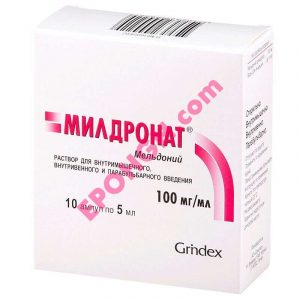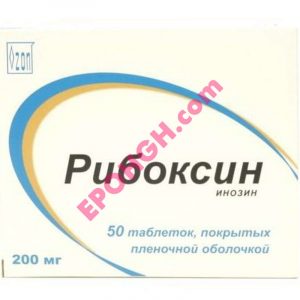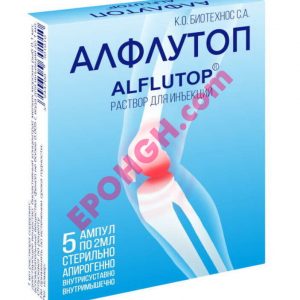$164.00
Description
Pharmacodynamics
action mechanism. The active component of Likferr100, an iron sucrose complex, consists of a multinuclear iron (III) hydroxide core surrounded by a large number of non-covalently bound sucrose molecules. The average molecular weight of this complex is approximately 43 kDa. The structure of the iron-containing multinucleate core is similar to the structure of the protein core of ferritin, a physiological store of iron. This complex is designed to create a controlled source of iron used for proteins responsible for the transport and storage of iron in the body (transferrin and ferritin, respectively).
After intravenous administration, the multinucleated iron-containing core of this complex is captured primarily by the reticuloendothelial system of the liver, spleen, and bone marrow. In the next stage, iron is used for the synthesis of Hb, myoglobin, and other iron-containing enzymes, or is stored primarily in the liver as ferritin.
Indications of the drug Likferr100
Treatment of iron deficiency conditions in the following cases:
– with a clinical need for rapid replenishment of iron stores,
– in patients who cannot tolerate oral iron preparations or do not adhere to the treatment regimen,
– in the presence of active inflammatory bowel disease, when oral iron supplements are ineffective.
Exercise is a great way to stay in top shape and deal effectively with physical inactivity. Many are so addicted that they start training seriously. Playing sports at a safe amateur level or even at a professional level changes the body. It becomes more resistant, and it is also easier for a person to control his own limbs, his sense of balance improves, and immunity increases.Sports also increase hemoglobin: as the muscles require more oxygen, the body adapts in this way.
However, certain changes are only possible when the lessons are really serious. That is, jogging in the morning or going to the gym 2 times a week does not count. This type of training really helps to keep fit. But they do not change the composition of the blood: this requires super-efforts.
But really serious loads can lead to an increase in hemoglobin. The norm for men and women increases by 10 points from 130 g/l and from 120 g/l, respectively. However, these changes occur when it comes to study hours. And if a person stops training in this way, over time, his hemoglobin will return to the norm, which is typical for most.
How to identify low hemoglobin?
The problem of low hemoglobin in athletes is expressed in the fact that people who exercise regularly accumulate a certain supply of nutrients and elements that they need in general. Therefore, a state of iron deficiency can make itself felt far from being immediately.
And here are 2 probabilities. Within one, the first symptoms will appear imperceptibly, not very pronounced. Most of these signs of pathology are overlooked, considering it to be something of a temporary minor discomfort. This can become a separate problem, since it is desirable to correct the lack of iron immediately. But the state of neglected iron deficiency will have to be eliminated for months. In difficult situations, it means hospitalization. And therapy takes time anyway.
Sometimes the athlete's body behaves differently – for a long time, health problems are not observed. And suddenly there are 'a lot' of signs of anemia. In any case, we are talking about standard symptoms:
- too pale skin, mucous membrane is able to cast blue,
- cold limbs that remain so in the heat,
- constant weakness, and does not stray from regular training,
- background sleepiness, does not depend on the actual number of hours of sleep per day,
- headache,
- 'Goosebumps' before the eyes,
- dizziness,
- heart palpitations, although there is no reason for this,
- sudden numbness in the extremities,
- shortness of breath even with minor physical exertion,
- increased irritability, nervousness and other signs of problems with the nervous system,
- heart failure in some cases,
- disturbances in the work of internal organs (if the pathology lasts a long time),
- problems with concentration and memory
- constant tiredness,
- a sharp decrease in immunity.





